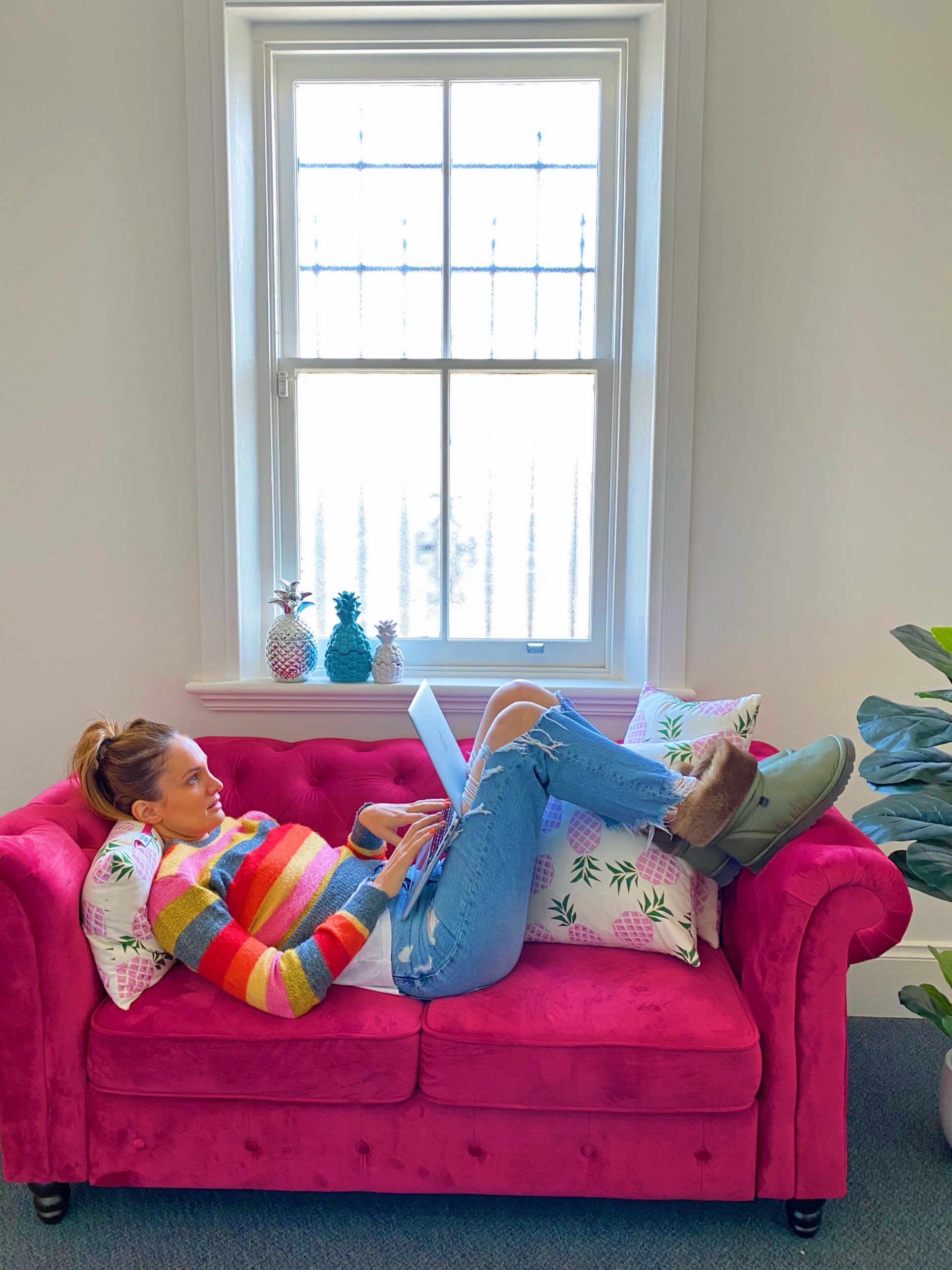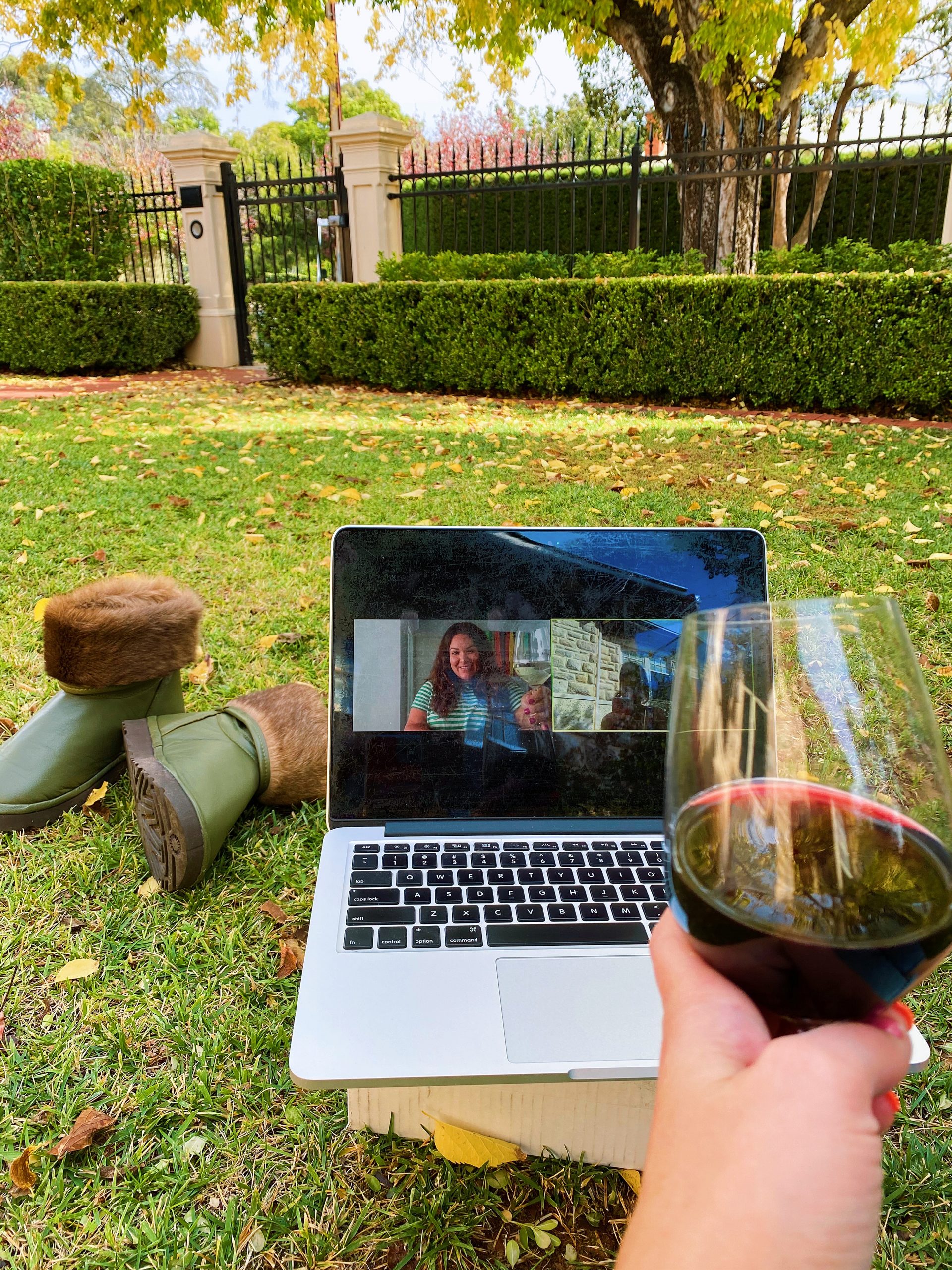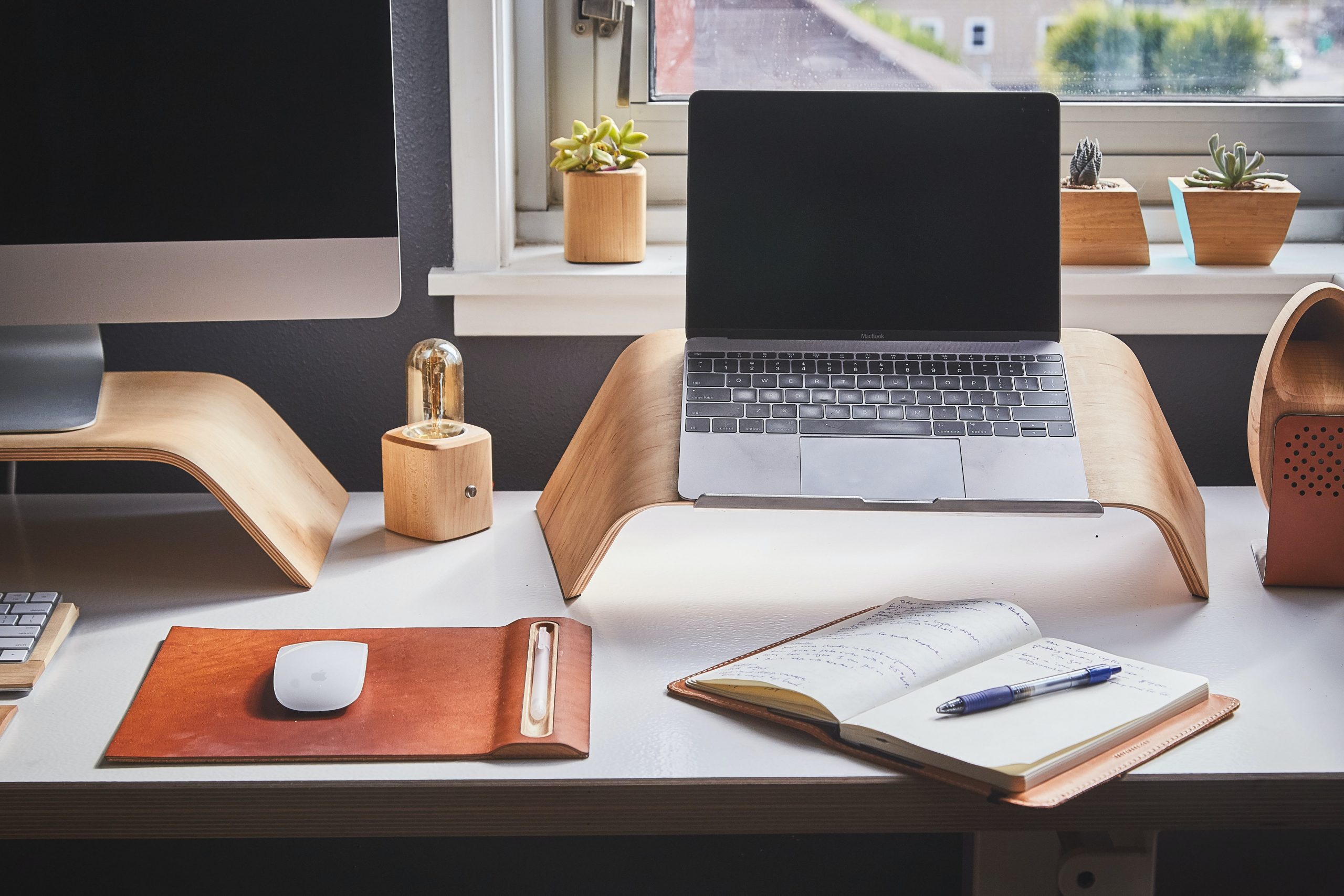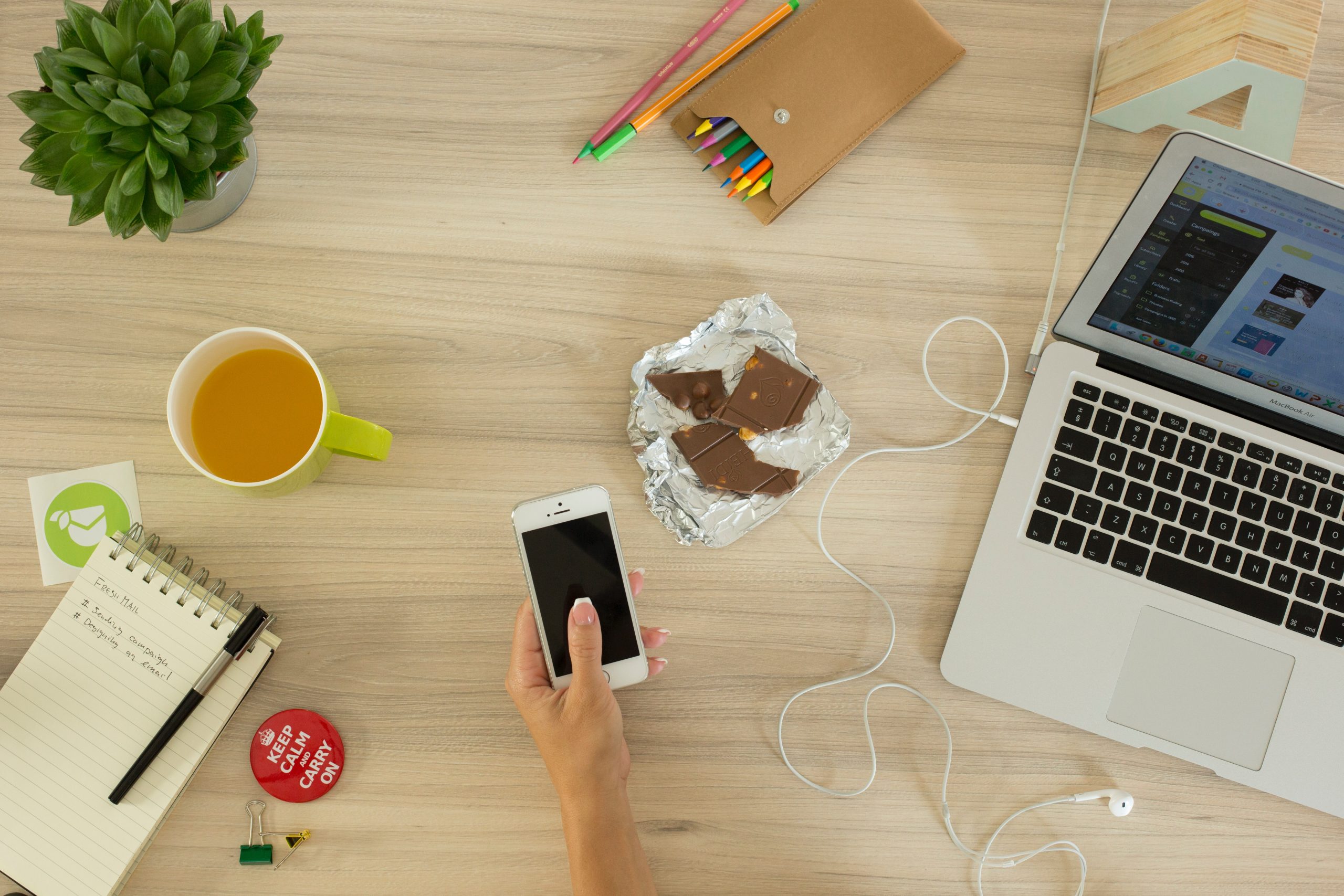Let’s talk about your “office” at the moment. What does your work station look like?
Mine is mostly my bed and sometimes my porch. When I want a change of scenery it’s my fave chair in front of the tv or occasionally my front lawn with a wine in hand, depending on whether there’s anything exciting happening outside (like the garbage truck going past).
 You see, Coronavirus has taken away our normal office arrangements and thrown us all into some kind of strange chaos where we are working from our beds and probably still in our pyjamas at 4pm. One thing’s for sure — our bodies are not being looked after. And I wonder why my lower back aches like I’m an 80-year-old blogger with a hunchback.
You see, Coronavirus has taken away our normal office arrangements and thrown us all into some kind of strange chaos where we are working from our beds and probably still in our pyjamas at 4pm. One thing’s for sure — our bodies are not being looked after. And I wonder why my lower back aches like I’m an 80-year-old blogger with a hunchback.
Because we’re not experts, (and because we’d probably get sued if we tried to dish out any health advice), we teamed up with Gabe Phillips from Motion Theory Physio to help us, from a physiotherapy perspective, to set up an ergonomically safe space for those working from home. So if you want to avoid occupational stress syndromes likes postural strain, headaches, eye strain, repetitive stress injury and painful necks and backs, read on…
These tips may also be helpful for children working from home to allow them to be productive while avoiding injury.
1. The chair
When setting up your chair, try and choose a chair that is built to support your spinal curve. Anything with lumbar support is preferable. The chair should be positioned to allow your feet to rest flat on the floor while keeping your thighs at a parallel level.
If you’re a little shorter and your feet don’t reach the floor, you can use a footrest which may even work with a couple of old phone books or some of the kid’s textbooks. Incorporating arm rests may allow your arms to gently rest on the supports to allow pressure reduction on those tight overactive muscles in the neck and shoulders.
2. The computer set up
Make sure your keyboard and mouse are both on the same surface. When using the mouse, your upper arm should be close to your body with your wrist in a straight position. Your hands, which operate your mouse and keyboard, should be just under the height of your elbows.
The screen is very important as we are generally glued to it for most of our working day in these new environments.
The monitor should be an arm’s length from your face with the top part of the monitor just under the level of your eyes. Remember if you wear glasses to not slowly lean in towards the screen in an attempt to reduce this distance as this will certainly lead to neck and shoulder blade tension.
3. The desk
Lots of people are getting creative with their desks during this time, which is great. If your employer provided you with a ‘sit to stand’ desk, you can alternate between sitting and standing. This is fantastic for alleviating tension through the hips, lower back and neck. Slowly working up towards a ratio of forty mins of standing with twenty minutes of sitting is a nice balance for the body.
A normal flat desk must allow room for the knees and thighs without feeling cramped. The desk height can be propped up with some books to increase clearance room for the legs, or if your desk is too high, the seat must come up and a footrest must be incorporated into the setup.
4. The phone and everything else you might need
Let’s make sure the phone, calculator, stapler and all your work-related materials are neatly organised to avoid you reaching out too far. Headphones are also a far better alternative to holding phones under your ear or leaning forward into speakers.
It’s also a nice touch to add some stress detractors to the work-space for you and your children. Objects like plants, family photos and items of colour can stimulate positive feelings in your new home work-station.
5. Exercises you can try at home
There are some wonderful basic postural exercises which can really take the pressure off your aching muscular systems. Simply stand and take a deep breath in while raising your arms out to the sides. As you breath out, lower your arms and notice how your shoulders are sitting in a more desirable position. It may also be beneficial to imagine you’re pulling back on a bow and arrow and holding the position where the bow in drawn for five seconds.
One last great postural exercise is to clasp your hands with your arms extended and reach forward with your head down to allow the muscles on the inside of your shoulder blades to stretch.
Most importantly, as with everything to do with your body, the exercises, work stations, and effective treatment vary from individual to individual. Unfortunately, there is not a one size fits all approach to how to best look after your body. For optimal results in this difficult time, it may be best to consult a physiotherapist to ascertain the most effective and safe way for you and your children to work productively from home.
Come and see me at Motion Theory Physio, I’d love to help!
Gabe













